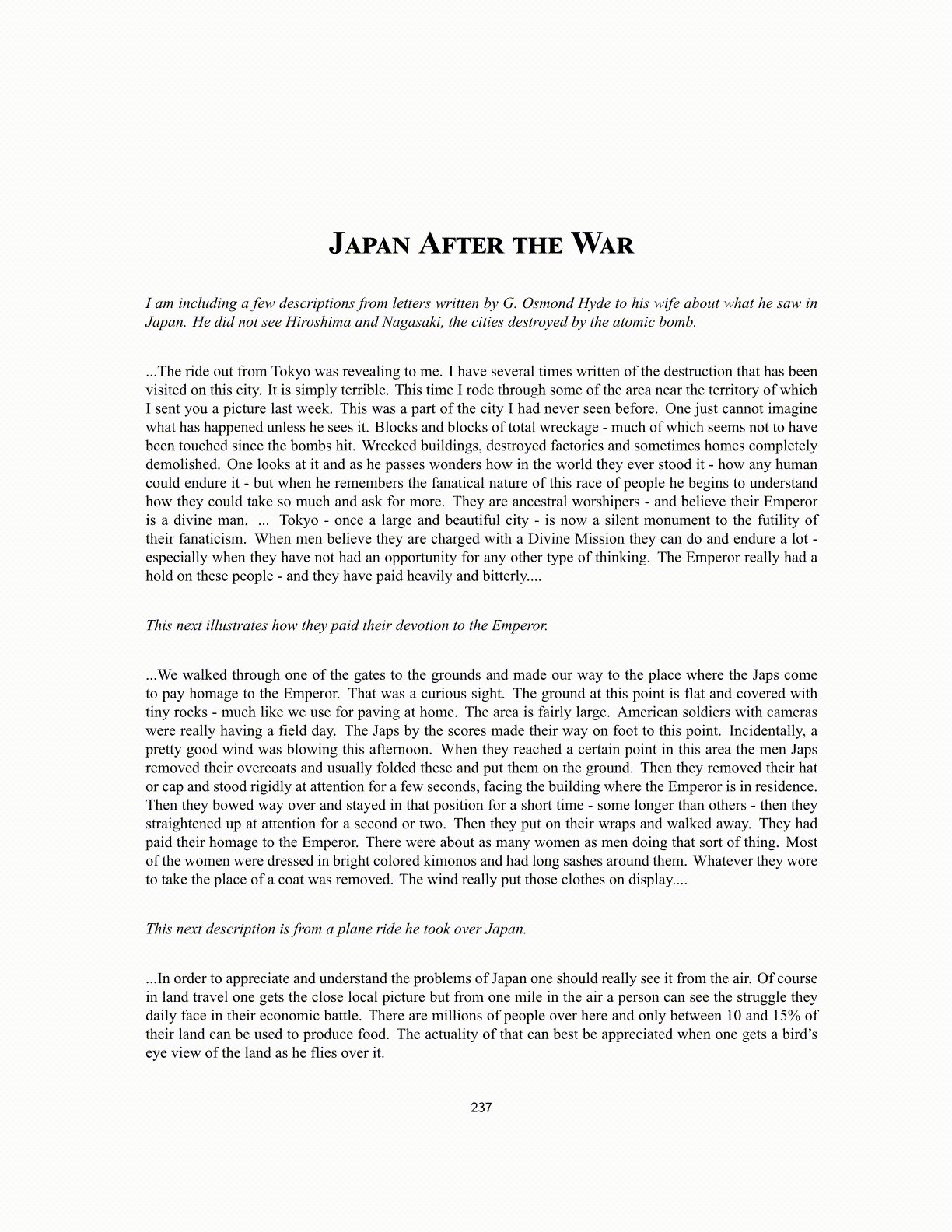
JAPAN AFTER THE WAR I am including a few descriptions from letters written by G. Osmond Hyde to his wife about what he saw in Japan. He did not see Hiroshima and Nagasaki, the cities destroyed by the atomic bomb. ...The ride out from Tokyo was revealing to me. I have several times written of the destruction that has been visited on this city. It is simply terrible. This time I rode through some of the area near the territory of which I sent you a picture last week. This was a part of the city I had never seen before. One just cannot imagine what has happened unless he sees it. Blocks and blocks of total wreckage - much of which seems not to have been touched since the bombs hit. Wrecked buildings, destroyed factories and sometimes homes completely demolished. One looks at it and as he passes wonders how in the world they ever stood it - how any human could endure it - but when he remembers the fanatical nature of this race of people he begins to understand how they could take so much and ask for more. They are ancestral worshipers - and believe their Emperor is a divine man. ... Tokyo - once a large and beautiful city - is now a silent monument to the futility of their fanaticism. When men believe they are charged with a Divine Mission they can do and endure a lot - especially when they have not had an opportunity for any other type of thinking. The Emperor really had a hold on these people - and they have paid heavily and bitterly.... This next illustrates how they paid their devotion to the Emperor. ...We walked through one of the gates to the grounds and made our way to the place where the Japs come to pay homage to the Emperor. That was a curious sight. The ground at this point is flat and covered with tiny rocks - much like we use for paving at home. The area is fairly large. American soldiers with cameras were really having a field day. The Japs by the scores made their way on foot to this point. Incidentally, a pretty good wind was blowing this afternoon. When they reached a certain point in this area the men Japs removed their overcoats and usually folded these and put them on the ground. Then they removed their hat or cap and stood rigidly at attention for a few seconds, facing the building where the Emperor is in residence. Then they bowed way over and stayed in that position for a short time - some longer than others - then they straightened up at attention for a second or two. Then they put on their wraps and walked away. They had paid their homage to the Emperor. There were about as many women as men doing that sort of thing. Most of the women were dressed in bright colored kimonos and had long sashes around them. Whatever they wore to take the place of a coat was removed. The wind really put those clothes on display.... This next description is from a plane ride he took over Japan. ...In order to appreciate and understand the problems of Japan one should really see it from the air. Of course in land travel one gets the close local picture but from one mile in the air a person can see the struggle they daily face in their economic battle. There are millions of people over here and only between 10 and 15% of their land can be used to produce food. The actuality of that can best be appreciated when one gets a bird’s eye view of the land as he flies over it. 237